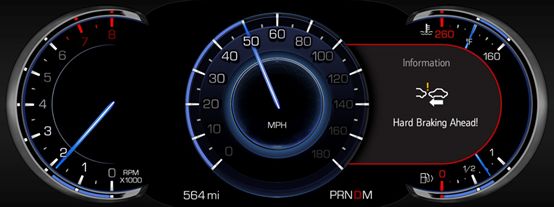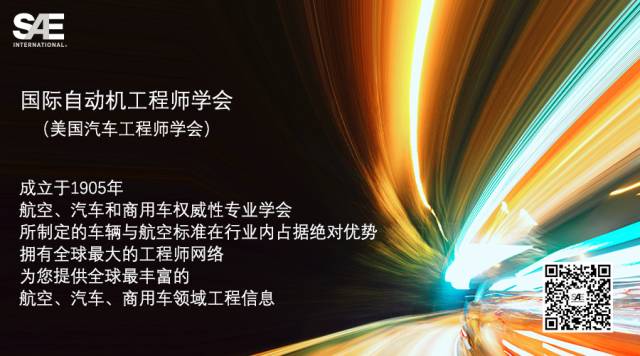 通用汽车推出 2017款凯迪拉克 CTS,展示了 DSRC (专用短程通信) 技术在车辆通信方面的部分潜力。此外,2017 款凯迪拉克CTS 也是全球首款具备DSRC 通信功能的量产车型(图片来源:通用汽车)。
通用汽车推出 2017款凯迪拉克 CTS,展示了 DSRC (专用短程通信) 技术在车辆通信方面的部分潜力。此外,2017 款凯迪拉克CTS 也是全球首款具备DSRC 通信功能的量产车型(图片来源:通用汽车)。

今年1 月,2018 年 SAE 政府/行业大会在美国华盛顿盛大召开。会上,专家学者继续就自动驾驶通信网络的最佳实现方法展开激烈讨论。
在一个有关互联汽车技术的分会中,蜂窝网络通信巨头AT&T 公司再次重申,公司将在今年晚些时候,为部分区域的用户提供超高速移动 5G 通信服务。
尽管 5G 蜂窝网络通信技术似乎最能满足自动驾驶系统 (ADS) 的安全通信需求,但会上的另一位发言人也表示,作为5G 技术的“老对头”,DSRC的故事“并未结束”。
AT&T 公司物联网解决方案产品开发主要技术人员Zach Carter 表示,过去较长一段时间中,公司一直在为 5G 技术的部署打基础,并称 5G 技术是“使互联生态系统成为现实的”重要途径,可以让我们真正迎来 V2V、V2I 及无穷无尽的各种联网设备。
Carter 表示,除理论速度高达 400 Mbps 之外,5G 技术还具有超低延迟、高吞吐量和“可支持大规模连接”等众多优势。他补充说,新的5G 服务采用基于标准的架构(这对未来的大规模普及非常重要),并由一个名为 Network 3.0 Indigo 全新软件平台进行支持。
在会议结束后不久,通用汽车全球安全总监 John Capp 表示,尽管很多人都对DSRC 在 5G 技术普及后的实用性有所质疑,但作为 5G 技术在ADS 相关车辆通信领域的“主要竞争对手”,这种短距离通信技术的“故事仍没有结束”。Capp 还提醒说,通用旗下的 2017 款凯迪拉克 CTS ,是全球首款具备 DSRC 功能的量产车型。
DSRC 的支持者认为,DSRC 技术的现有通信范围已经可以达到半径 300 米(984 英尺),而 5G 通信还尚未走到试点阶段。不过,应用DSRC 技术还需要配备专用的网络基础设施,而蜂窝网络通信所需的支持设施基本已经就位。
AT&T 的 Carter 介绍说,公司已经展示了一种“桥接”系统,可将 DSRC 与蜂窝网络 LTE 服务结合起来,进而让 DSRC 的传输范围扩展至 300 米之外。据了解,AT&T 的“桥接”技术演示是在 2017 年与德尔福 (Delphi) 和福特 (Ford) 合作完成的。
At the 2018 SAE Government/Industry meeting in Washington, DC, experts continue to discuss the best method for automated-driving communication networks.
View gallery »
In Washington, DC, at the 2018 SAE Government/Industry meeting this week, cellular-communications giant AT&T affirmed in a session on connected-vehicle technology that it will launch ultra-fast mobile 5G service in limited areas sometime late this year.
And although 5G cellular communications promises to be a near panacea for the safety- and security-related communication needs of vehicles with automated-driving systems (ADS), another speaker at the conference asserted that 5G’s longstanding rival technology, dedicated short-range communications (DSRC), “is still alive.”
Zach Carter, AT&T’s principal member of the technical staff of IoT Solutions product development, said the company “has been laying the groundwork for some time,” for 5G deployment, calling 5G “a strategy to enable a connected ecosystem” for vehicle-to-vehicle (V2V) and vehicle-to-infrastructure (V2I) communication, as well as for an endless list of other internet-connected devices.
AT&T announced in early January that it will introduce mobile 5G service in a dozen U.S. markets in late 2018.
Carter said that in addition to theoretical speeds up to 400 Mbps, 5G offers extremely low latency, high throughput and “massive connectivity” capability. He added that the new 5G service will be standards-based (a crucial point for future universal adoptability) and will be backed by an all-new software platform called Network 3.0 Indigo.
Shortly after in the conference session, John Capp, director of global safety at GM, stated that DSRC, cellular technology’s chief competitor in ADS-related vehicle communications, is “still alive,” although many have questioned DSRC’s usefulness if 5G cellular service become ubiquitous. Capp reminded that GM’s Cadillac brand made the 2017 CTS the first production vehicle to be fitted with DSRC capability.
Advocates of DSRC point out that the technology, which has a range limited to about 300 m (984 ft), is available right now, while 5G has not yet reached pilot-program deployment; DSRC requires dedicated infrastructure, however, and the costs associated with a widespread buildout that already is in place for cellular communications.
AT&T’s Carter reminded that the company has demonstrated a “bridge” system that combines DSRC with cellular LTE service to transmit DSRC signals beyond its 300-m range. That demonstration was conducted with partners Delphi and Ford in 2017.
Author: Bill Visnic
Source: SAE Automotive Engineering Magazine
等级
打分
- 2分
- 4分
- 6分
- 8分
- 10分
平均分
